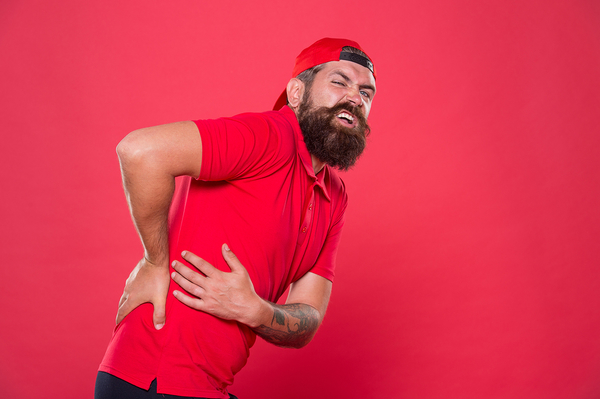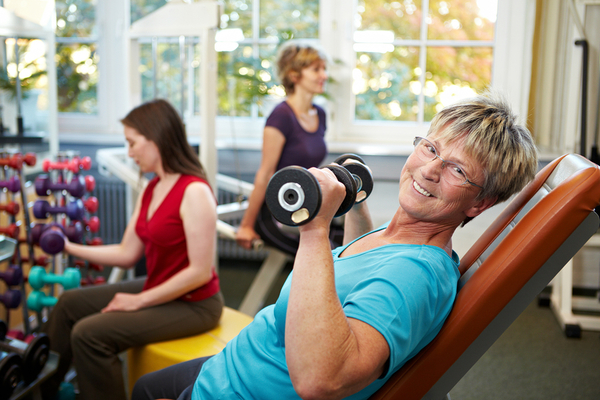Blog
3 Easy Back-to-School Hacks for Your Child
Going back to school can be stressful business, but the scenario always goes off better when you and your child know what to expect and go in prepared. Below are a few easy, breezy lifehacks that will help you and your child make sure that the back-to-school adjustment goes off without a hitch.
Plan All the Meals
Try to plan out breakfast, lunch, and dinner and make sure to incorporate clean, whole foods anywhere you can. Avoid processed foods that require your body to spend a considerable amount of energy in order to digest. We are what we eat, so eating plenty of veggies and clean protein will bring out the best in your little one.
Limit Screen Time
Encouraging your child to spend a little more time being active and outdoors never hurt anyone. More and more studies are showing that spending massive amounts of time in front of the computer and TV can be harmful to your health in multiple ways.
Start Healthy Habits Now
Early to bed and early to rise makes kids healthy, wealthy, and wise and such. Think of this time as an opportunity to lay a solid foundation for your child. Get them practicing esteemable behavior with a little discipline and some positive reinforcement along the way. You got this!
Chiropractic treatments are another great way to get the best out of your child. We’re not over here simply to help people get over back injury — we do a lot to keep our patients of all ages healthy and in the game for the long haul at Family Chiropractic and Natural Healing Center. Give us a call today to schedule you and your child’s initial consultation.
Back Went Out? Chiropractic Can Help!
As we age our bodies tend to be less effective at doing certain things. Even though we’re less able to perform rigorous tasks without experiencing adversity, pain, or even injury, we still push ourselves to those same limits we were able to reach when we were younger.
Many patients we see at Family Chiropractic and Natural Healing Center experience back injuries, including throwing their backs out.
When our backs go out, it’s a pretty helpless feeling, but chiropractic treatments are designed to help you endure and even treat back injuries that occur as we age.
If your back has gone out recently, it’s a good idea to schedule a consultation with a chiropractor in your area. Chiropractic adjustments will help your body function at optimum capacity, treat pain and discomfort the drug-free way, and help you avoid future injury.
Contact Family Chiropractic and Natural Healing Center today to learn more about how chiropractic adjustments can help you live a more comfortable, healthy, active life.
How to Improve Your Nutrition Today
Eating intelligently is of paramount importance in maintaining a healthy life and achieving longevity. Below, Family Chiropractic and Natural Healing Center goes over a few ways to improve your overall nutrition and start experiencing an immense amount of health benefits today.
Eat Your Vegetables
Making sure that you eat your vegetables is crucial in living a healthy lifestyle. Vegetables are packed with nutrients that will help fuel you throughout the day.
Cut Down on Sweets
Try to limit yourself to sensible dessert. Dark chocolate and organic peanut butter is a healthy alternative to, say, chocolate cake. Try to get your sugar fix from fresh fruit.
Think About When You Eat
Don’t eat past 8pm if you’re going to bed around 10 for better sleep and improved digestion.
Eat Clean, Whole Foods
Staying away from processed foods will help your GI system stay functioning at optimum capacity. Once you’re eating healthy, you’ll really start to notice any time you deviate from your diet, because you’ll likely feel pretty awful when you eat junk food once your body no longer craves it.
Contact Family Chiropractic and Natural Healing Center today to learn more about how chiropractic treatments can be the ultimate companion to a healthy diet in the aim of achieving a healthy lifestyle.
Chiropractic for the Martial Arts
Did you know that chiropractic can serve as an amazing antidote to an active lifestyle that includes a rigorous martial arts discipline? Many MMA fighters and martial artists have close relationships with their chiropractor to boost recovery and serve as a drug-free pain solution.
Below are a few key ways that chiropractic adjustments benefit martial artists.
It’s Good for Your Joints!
Chiropractic is good for your joints, which take a serious toll during the repetitive drills covered in martial arts. Your knees, ankles, shoulders, and elbows are susceptible to wear and tear, not to mention pain and injury.
It’s Good for Cognitive Function
Chiropractic treatments have been shown to improve communication from the brain to the rest of the body. Your spine is interconnected to the nervous system and can get seriously jammed up during the daily grind, not to mention at the dojo.
Improved Immune System
You might come into contact with germs at the dojo. Chiropractic treatments have been shown to improve the digestive system and the immune system, which will help you stay consistent with your training.
If you have any additional questions about how chiropractic treatments benefit martial artist, contact Family Chiropractic and Natural Healing Center today.
Tips to Start Saving Your Back Now
We take our bodies for granted until they start reminding us that we need to take care of ourselves. Our back and spine are crucial to our wellness and our mobility in multiple ways. At any stage in the game, it’s a good idea to start being more mindful of the daily pressure you put on your back, not to mention start utilizing activities, methods, and techniques that will help strengthen your back and save you from costly injuries down the road.
Below are a few ways to start saving your back today.
Get Active
When you’re at the gym, make sure that you engage your core muscle groups, not to mention engage in lifts that help strengthen your back, which will make your back feel strong and ready for whatever you have coming.
Recover Intelligently
Engage in active recovery, which can include a day of yoga or a nature hike instead of binge-watching Netflix on the couch. You’ll get something done while giving your body the time and space it needs to recover.
Perfect Your Posture
If you’re walking around or sitting with bad posture, now is the time to correct that problem. Sitting with good posture will help strengthen your back and make you feel better day-to-day.
Chiropractic treatments are also designed to help provide drug-free pain relief, not to mention help you avoid injuries down the road, not to mention treat the injuries you’re living with today. Contact Family Chiropractic and Natural Healing Center today to schedule your consultation.
3 Easy Productivity Hacks
Have you ever thought to yourself that there’s just not enough time in a day to get done what you need to get done? Trust us, you’re not alone. That’s why we decided to give our patients and readership some educational information about how one can be more productive on a daily basis.
Read on for a few easy tricks to tweak your lifestyle so you can start completing more of your daily tasks.
1.) Exercise
This might seem counterintuitive since you have so many things going on. However, by taking an hour to exercise, whether it be hitting the weights, running, or even something like Muay Thai training, you’ll get your endorphins flowing and you’ll feel better day-to-day. You’ll actually start to notice when you don’t get a workout in because your energy and positivity levels will seem low.
2.) Break Your Day Down By Hours
Try to start breaking your day down hour-to-hour. You’ll start to see pockets of time where you might not be efficient. You might set aside an hour to get something done that only takes 20 minutes, then be frivolous with the rest of that hour. By doing a self-audit you’ll be forced to see where you can be more efficient.
3.) Stop the Party
We get it, people like to go out. But you don’t need to spend your time in late-night bars anymore. Think of an hour spent in a bar — unless you’re working — as an hour wasted. When you start saying “No” to “The Party” you’ll see that your energies are far better spent in other areas of your life.
Chiropractic treatments are a great way to unlock new potential in yourself as well. Contact Family Chiropractic and Natural Healing Center today to learn more.
Weight Training Dos and Don’ts
When it comes to weight training, doing it correctly is as important (if not more important) as doing it often. Below are a few best weight training practices and a few bad habits to try to avoid.
Do: Warm Up
Warming up is important, whether you do it for 10-20 minutes or for an entire hour. Warming up makes your muscles and joints more pliable. Shoot around a basketball before you hit the weights — it will improve your recovery and performance.
Don’t: Overload Weight
We get it, you want to be strong. However, by racking on the weight you’re going to be putting a ton of pressure on certain areas of the body — usually the back and various joints. Go lighter in weight and higher in reps to ensure optimium longevity.
Do: Focus on Technique
Technique and practicing good form are more important than lifting maximum weight. By focussing on achieving perfect technique you’ll also minimize joint damage and focus on the muscle groups you intend to.
Don’t: Overwork Yourself
You might be tempted to go hard right out of the gate, but by executing measured, precise workouts that don’t leave you sore in the morning will help you stay active and stay in the game.
Contact Family Chiropractic and Natural Healing Center today if you’d like to learn how chiropractic care can be the perfect compliment to weight training. We have a long track record of keeping those even with the most active lifestyles healthy and well!
3 Quick Ways to Change Your Lifestyle
At Family Chiropractic and Natural Healing Center, we specialize in providing chiropractic treatments to our diverse patient base which set them up for living long and healthy lives. Another part of what we do over here is to provide education to our patients that help them live, feel, and look better.
Below are a few quick and easy ways to improve your lifestyle. It’s the little things that add up!
1.) Take a Service-Style Attitude
Start thinking in terms of how you can be of service and how you can bring a certain amount of light to each situation. You’ll be surprised how much more often people think of you when you start putting others first in your life.
2.) Cross Your Ts and Dot Your Is
Don’t leave things that can be done today leftover for tomorrow. When you accomplish all that you set out to do in a day, you’ll feel… well… accomplished! You’ll rest that easy sleep that comes along as a benefit from taking care of business.
3.) Get and Stay Well
Exercise your body and your mind. Take on new challenges and push yourself to start making healthier decisions moment to moment, whether that’s going for a hike instead of binge-watching television, eating that kale salad instead of french fries, and reading a more difficult book instead of scrolling your normal news feed.
Chiropractic treatments are another great way to quickly boost your wellness for a healthier lifestyle. Contact Family Chiropractic and Natural Healing Center to schedule your one-on-one consultation.
5 Ways to Get More Energy
As we go about our days, we might start to hit the proverbial wall at some point in the late afternoon. For many of us, by the time we get home, even though we still have a few things to cross off our to-do lists, we’re ready to crash hard after the day’s events.
Read on for a few tips to boost your daily energy.
1.) Eat Well
Eat foods designed to fuel the body — clean, whole foods like veggies, protein, fruit, walnuts, etc. Stay away from processed carbs and refined sugars, which might give you an initial boost, but will make your crash. You want to be eating things that your body can digest easily, so you have more energy to burn.
2.) Stress Less
Our thought life spends a lot of our energy, so it’s important to remain focused on the important things in life. Try not to sweat anything that is out of your control — which is pretty much everything besides yourself.
3.) Exercise
Staying physically active will help boost your energy throughout the day. Make sure you don’t push yourself too hard before a day’s work, though.
4.) Sleep 7-9 Hours
Sleeping the requisite 7-9 hours each day is pivotal in maintaining your mental and physical health. You’ll notice your energy levels rise and your times of fatigue start to decrease.
5.) Drink Half Your Body Weight in Ounces of Water
Staying hydrated is hugely important, and over 80% of the population does not hydrate enough. Drinking the right amount of water will help keep your body balanced and give you better mental clarity.
These tips mentioned above are mere suggestions. If you’d also like to learn how chiropractic treatments can reduce your fatigue, life depression, and help treat pain the drug-free all-natural way, contact Family Chiropractic and Natural Healing Center today to schedule your consultation.
Easy Tricks to Boost Your Longevity
Living a longer, better life is the goal of many people in today’s health-conscious society. Even though technology and medicine have advanced much, the average life expectancy still lingers around the 70-80 range, which means many of us aren’t exploring the possibilities of optimizing our health.
Follow the tips discussed below to increase your longevity.
Get Your ZzZs
Make sure you get 7-9 hours of sleep each 24-hour period. Not getting enough sleep means your body isn’t getting the regenerative time it needs to cleanse the body and brain of toxins and charge your mental and physical batteries.
Eat Clean, While Foods
Shopping along the edges of the grocery store means you’re shopping for veggies, fruits, and clean proteins. Stay away from sugar and processed carbohydrates whenever you can. A prolonged poor diet will certainly decrease your lifespan.
Stress Less
Find a way to let go of resentment. Find a way to quiet your mind and you’ll experience untold health benefits. Meditate daily if you can build that practice. Do yoga. Workout until your body gets tired. Doing all of these things will boost your mental wellness and has been shown to help you live a longer, happier, healthier life.
Contact Family Chiropractic and Natural Healing Center to learn more about the many benefits of chiropractic treatments.









